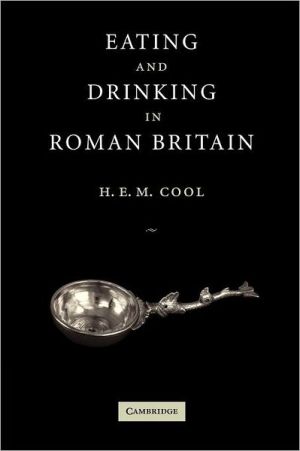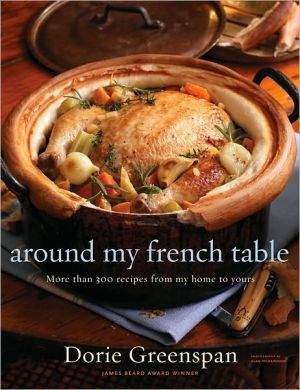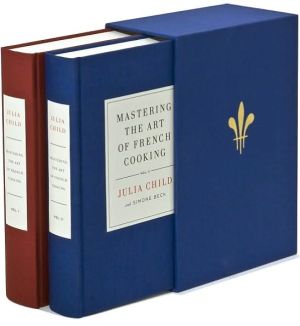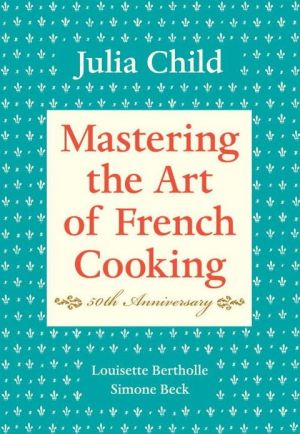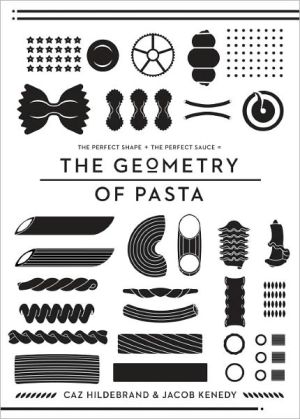Eating and Drinking in Roman Britain
What were the eating and drinking habits of the inhabitants of Britain during the Roman period? Drawing on evidence from a large number of archaeological excavations, this fascinating 2006 study shows how varied these habits were in different regions and amongst different communities and challenges the idea that there was any one single way of being Roman or native. Integrating a range of archaeological sources, including pottery, metalwork and environmental evidence such as animal bone and...
Search in google:
Illuminates the eating and drinking habits of the inhabitants of Britain during the Roman period.
Eating and Drinking in Roman BritainCambridge University Press978-0-521-80276-5 - Eating and Drinking in Roman Britain - by H. E. M. CoolExcerptCHAPTER 1ApéritifThis is a book that takes that most common question ‘What shall we have for dinner?’ and uses it to explore the communities that lived in Britain during the first half of the first millennium AD (a period that will hereafter be called Roman Britain as a convenient shorthand). Subject-matter such as this has not always been thought very respectable. Certainly it has not been considered central to the story of Roman Britain. Yet in many ways there is no better way of understanding past societies. Eating and drinking are frequently about much more than sustaining life by the ingestion of sufficient calories. What you can and cannot eat, who you can and cannot eat it with, tends not to be so much a matter of personal choice, as the result of social conditioning. By studying the eating patterns of a society, you enter areas far beyond the mere nutritional. Eating and drinking rituals will quite frequently take you into the realms of religious beliefs, class, gender relationships, and ethnicity. Or, as Brillat-Savarin said more succinctly, ‘Tell me what you eat, and I will tell you what you are’.1The information that can be used for this study is entirely dependent on archaeological exploration. The scanty ancient sources that have traditionally underpinned the study of Roman Britain are virtually silent onthe topic; and, when they do say anything relevant, can generally be shown to be unreliable witnesses. Archaeology, by contrast, produces data in almost embarrassing abundance. We have so much information that the problem is how best to use it, not just to explore eating habits, but also any other topic of interest. Most of these data are in the specialist contributions analysing and cataloguing the things found during excavation. These lurk behind the structural narratives of excavation reports like the submerged part of an iceberg, and are a seriously underused resource. I do not consider it an overstatement to say that they are where Roman Britain resides though, being a specialist myself, it might be considered that I am prejudiced. The patterns seen in the artefact and environmental reports often cut across preconceived notions of how life was lived in Britain during the earlier first millennium AD. It is my aim to bring this information to wider attention and, in doing so, demonstrate how it can be used.If the specialist reports are so important, why are they so underused? The answer lies in the fact that this knowledge base developed as a service industry providing excavators with the information they needed to understand the structural narrative. It was generally very highly focused towards the provision of dating evidence because of the way Romano-British studies developed. There is a long history of studying the province stretching back to the antiquaries of the eighteenth century such as Stukely and Horsley. For many years the preferred approach was to use the archaeology as an illustration of the meagre historical record derived from the ancient sources. The role of the army, and the changing military dispositions, took centre stage. For this the overwhelming need was to be able to date sites, and to identify the different periods when particular forts were occupied. This led to a hierarchy of esteem with the finds that were either intrinsically dateable, or which could be dated, valued over those perceived as not providing this information. So, much attention was devoted to coins and inscriptions, which often come with their dates written on them. Dated typologies of pottery could be built up using the stratigraphic associations with these independently dated items, and the pottery could be used to date contexts without coins or inscriptions.Over the past two or three decades, attention has shifted much more towards how provincial society developed. Ways of looking at the province have been much influenced by broader, theoretical approaches of the type loosely described as post-processual. Though these approaches look at much wider issues than the previous military – historical approach, what is still wanted by excavators is the dating that can be provided by the finds, and such information about the trade and exchange networks of the site as the material can provide.The specialists who produce the reports naturally structure their work to the requirements of their ‘client’, the person writing up the excavations. The end result of this can easily be seen by glancing at most pottery reports. There will frequently be detailed considerations of the decorated and stamped samian sherds and the stamped mortaria, as these are perceived as best being able to give the types of dates needed. The rest of the pottery will often be dealt with in a more summary way. The most favoured route currently is to prepare fabric and vessel type series, then quantify and summarise the assemblage according to these criteria, as this will help to provide information about the trade and exchange networks.Increasingly whilst providing this basic, but ultimately rather boring, information, wider aspects of what the data are telling us are buried in the better specialist reports. This has been going on for some time but much of the wider archaeological community seems unaware of it. This is probably because few people read excavation reports from cover to cover. They will gut them for such information that is directly relevant to what they are working on, and hope that the author of the excavation monograph will have extracted the ‘best bits’ of the specialist reports for the overview. In my experience of writing and publishing specialist reports for over a quarter of a century, this is a misguided hope. It is a rare report that explores the interactions between all aspects of the data. It is the aim of this book to explore such interactions to show what a richly textured picture of the past comes about when this is done.It has to be admitted that the picture is still a very patchy one. In part this comes about because some areas and types of site have seen relatively little work. Until the advent of developer-funded archaeology, for example, rural sites other than villas were seriously neglected.2 Some of the gaps result from inadequate specialist reporting. This can come about for various reasons. Sometimes it is because work on the specialist categories is seen as an optional extra. Funds are not invested in various categories, or it is decided not to report fully on the material. Sometimes they are inadequate because certain conventions of reporting have arisen. In some areas the reports appear to be written mainly for the handful of fellow specialists who work in the field, blithely ignoring the fact that the ultimate aim must be to enable the integration of their information with all the rest of the data from the site. It is hoped that excavators and specialists reading this book will come to appreciate the gains that result from a full integration of all the material, and will perhaps mend their ways if necessary.This book can be regarded as being structured in three parts. The next four chapters introduce the sources of the evidence. The first three of these are strictly archaeological and look at the food itself, the packaging it came in, and the results of ingesting the food as demonstrated by skeletalImage not available in HTML versionFigure 1.1. Map showing the principal sites mentioned in the text.Image not available in HTML versionFigure 1.2. Detailed insets 2 and 3 for fig. 1.1. Inset 2 shows principal rivers in the area and inset 3 the main Roman roads.Image not available in HTML versionFigure 1.3. Detailed inset 4 for fig. 1.1 showing the main Roman roads.remains. The biases inherent in these sources will be examined, and the ways in which the different types of finds are generally studied will be discussed. This first part concludes with a consideration of the written evidence (Chapter 5). Some of this is archaeological and directly relevant to Roman Britain, such as the accounts and shopping lists recovered from Vindolanda. Most of the ancient literary sources are not directly relevant to the province as they relate to the Mediterranean world, a very different social milieu. It is useful to look at them because they do provide a background to the lifestyles of at least some of the elite population in the province.The second and third parts look at the data in two different ways. Chapters 6 to 15 look at general patterns seen in the ingredients available and favoured, and cooking techniques. It starts with basic information about the kitchen and utensils, and moves through the major food categories to finish with drink. This section takes as its model classic works in the culinary repertoire that explore the cuisine of particular parts of the world such as Elizabeth David's French Provincial Cookery, Marcella Hazan's Essentials of Classic Italian Cooking and Rosemary Brissenden's South East Asian Food. This section exploits data from a wide variety of sites. In the third section (Chapters 16–19) the focus shifts to particular sites at particular times to explore the tastes of different communities. These case studies demonstrate how different strands of information can be combined to show how life was changing.The chronological scope of the book ranges from the late pre-Roman Iron Age, when the influence of Rome was being felt in the south-east, until the fifth century when a new social environment was developing. The geographical range is that part of Britain that had extended periods within the Roman province, i.e. the mainland to approximately the Antonine Wall on the Forth – Clyde isthmus.Finally, a few words about conventions used are appropriate. The term ‘finds’ will be used as a convenient shorthand to represent both artefactual and ecofactual material. The book is heavily dependent on a very large number of specialist reports, but to keep the references within publishable bounds the full details of each one cannot be given. In the footnotes the convention has been adopted of citing the specialist by name and the editor or author of the monograph; thus ‘Mould in Wilson 2002a’. In the references the details of the publication will be found under Wilson 2002a. The sources used for each table will be found in Appendix 1, and the locations of the main sites mentioned in the text are shown in figs. 1.1–1.3.CHAPTER 2The food itselfINTRODUCTIONThe main direct sources of information about food come from animal bones and plant seeds. The types of meat and varieties of vegetables and fruit consumed will be considered later in the book. Here the various factors that govern the type of information that can be extracted from this material, and the biases that are inherent in its study, will be discussed. The opportunity will also be taken to consider the question of quantification. Knowing how much of a commodity has been found at a site is essential if comparisons of consumption patterns on different sites are to be made. Finally in this chapter, the nature of rubbish disposal will be considered.ANIMAL BONESThe biases that affect animal bone assemblages can be divided into two broad categories relating to what can actually survive, and how what survives is excavated and subsequently studied.What survives depends very much on the soil conditions in which the material was deposited. Bone does not survive well in acidic soils, and in extreme cases can disappear in its entirety.1 The acidity of a soil is measured on the pH scale from 1 (extremely acid) to 14 (extremely alkaline), and below a value of 6 the mineral that makes up bone becomes extremely soluble. Soil acidity can vary greatly over small areas depending on husbandry, drift geology, and whether or not deposits are waterlogged. This is well demonstrated at Catterick where extensive excavations in and around the Roman town have produced conditions ranging from very good to so bad that no bone was recovered.2 Even within a site there may be differential survival according to what type of feature the bones are deposited in. On a site with otherwise good preservation, it was possible to show that sheep and pig bones survived far better in pits than they did in ditch fills,3 probably because they were not being exposed to the elements and to scavenging animals. Dogs can have a noticeable impact on a bone assemblage when they ingest the more succulent bones.4 It is also suspected that the bones of different species may decay at differential rates,5 though in the words of one eminent specialist ‘the decay of buried bone is complex, and still not well understood’.6 With all of these factors to keep in mind, it is not surprising that most animal bone reports devote some time to assessing the site formation processes that may have influenced the assemblage that survives.One of the most important developments in archaeological methodology over the past quarter century has been the routine sieving of samples of deposits. The sample is generally disaggregated in water, and then passed through a series of sieves of increasingly fine mesh size. Such a process is vital if plant remains of the type discussed in the next section are to be recovered, and it is also very important for the study of animal bone. It has long been appreciated that hand collection on site results in a very biased assemblage favouring large fragments, often from large animals. To evaluate fish and bird consumption large-scale sieving is vital,7 but it can also be important for some other types of meat. The consumption of suckling pig can only be evaluated if sites have been sieved, as the bones of this delicacy are rarely recovered by hand collection.8As will be obvious from this, comparing assemblages from different sites to build up a picture of who was eating what and at what time, has to be done with some care. There would be little useful information gained if the assemblage from a site with good preservation that had been sieved was compared with one where only hand collection had been carried out, even if the preservation was equally good. An additional problem arises with quantification, because assemblages can only be directly compared if they have been counted in the same way.Counting things that are habitually found in a broken state, like animal bone and pottery, is not simple. Counting fragments is unsatisfactory as the same amount of bone may end up being found in different numbers of fragments on two sites depending on butchery practice and site formation processes. As a very simple example we can imagine a long bone from a steer. On site A this is removed during butchery as an intact bone and disposed of in a pit where it remains undisturbed until excavated. On site B a similar bone may be chopped into six pieces to remove the marrow and the pieces then thrown into a ditch. One of these may be removed by a dog and be further fragmented into four pieces by a combination of chewing and people walking on the fragments where the dog leaves them. In total there are ten fragments of this bone from site B. Simple fragment count would indicate that there was ten times the amount of bone on site B as on site A, but of course this would not be true.Even though these problems have long been recognised, a considerable amount of fragment-count data exists in the animal bone literature. The commonly used Number of Identified Specimens (NISP) measure falls into this category. This has the added problem that the number of bones is not identical in all animals. Pigs have more teeth and toes than cattle, whilst goats can only be identified from a limited number of elements.9To overcome this a variety of counting strategies have been devised by animal bone specialists.10 One method is to calculate the minimum number of individuals represented; but any calculation of minimum numbers, be it for animal bone, pottery or any other category of find, is only useful for comparing the numbers of things of different sorts in a single assemblage. Minimum numbers have been shown to be very dependent on the size of an assemblage,11 and so are not a useful measure when comparing different assemblages with each other.A more useful measure is to count different elements of the skeleton based on identifying different diagnostic zones. This has the advantage that it not only allows comparison between assemblages, but also allows the investigation of what sort of consumption was going on at different sites. As a simple example, a site where the assemblage is dominated by bones from the heads and feet of cattle is likely to be an abattoir, as these are the elements often removed with the hide after the animal is slaughtered. The value of this method of quantification was shown in a study that incorporated a large number of animal bone assemblages from London. It was possible to show a pattern that could be interpreted as slaughter and hide removal taking place in the countryside, then transfer of the carcases to primary butchery sites within the city. At those the © Cambridge University Press
1. Aperitif; 2. The food itself; 3. The packaging; 4. The human remains; 5. Written evidence; 6. Kitchen and dining basics: techniques and utensils; 7. The store cupboard; 8. Staples; 9. Meat; 10. Dairy products; 11. Poultry and eggs; 12. Fish and seafood; 13. Game; 14. Greengrocery; 15. Drink; 16. The end of independence; 17. A brand new province; 18. Coming of age; 19. A different world; 20. Digestif.
